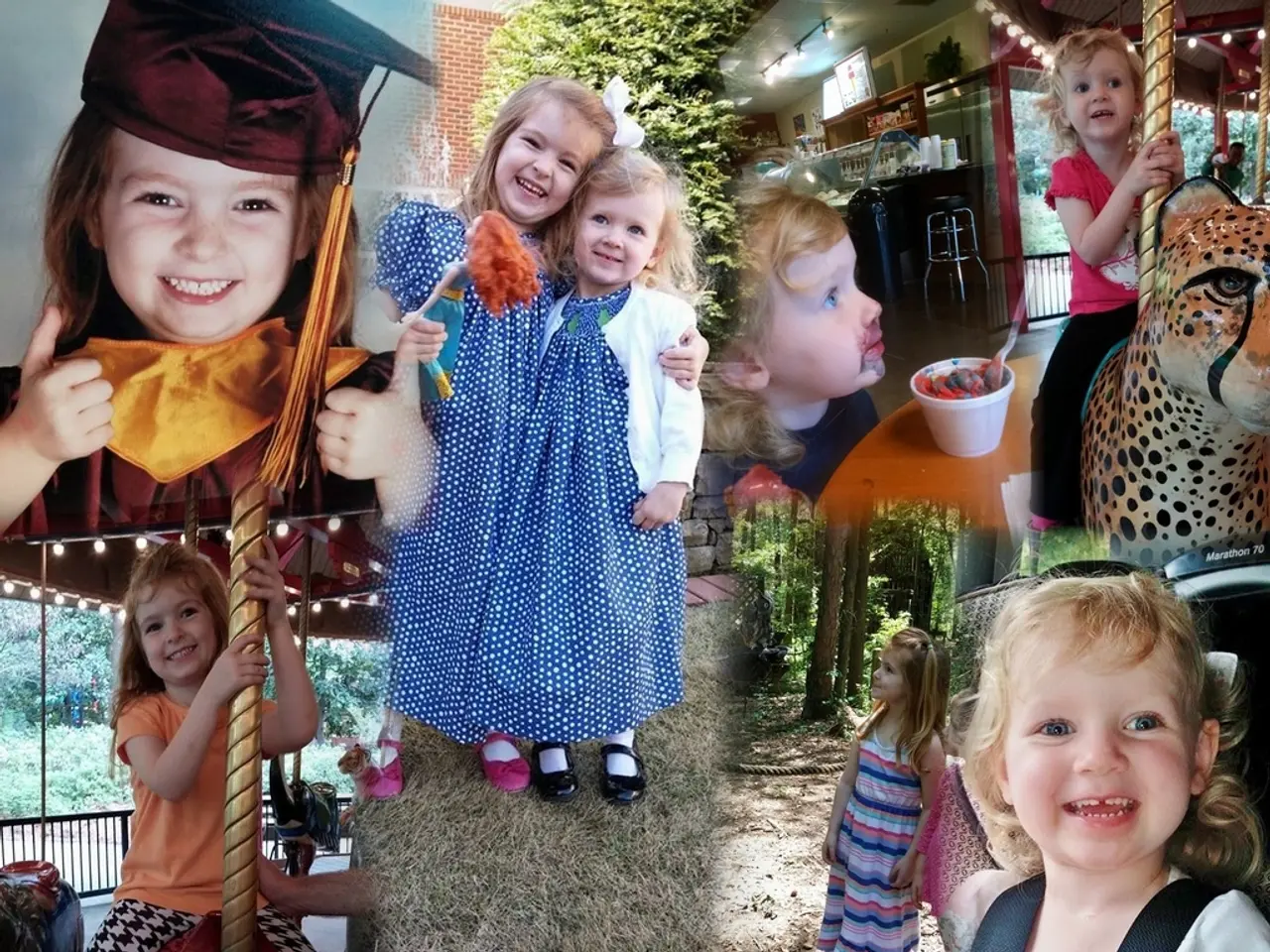Fun-filled Pi Day Activities for Children to Explore and Enjoy
Pi Day, celebrated annually on March 14th, is a special day that honours the mathematical constant Pi. This number, approximately 3.14, represents the ratio of a circle's circumference to its diameter. In this article, we'll explore various Pi Day activities suitable for children of different ages, along with Pi-related STEAM projects for further exploration.
Easy Pi Day Activities by Age Group
For young children (preschool to early elementary)
- Create colourful Pi Day bracelets using beads with colour-coded numbers representing digits of Pi.
- Make felt pizzas with pepperoni pieces arranged in circular patterns to introduce circles and Pi visually.
For elementary students
- Use printable Pi coloring pages and Pi digit graphing activities to combine art with math concepts.
- Play Pi Day card games designed to reinforce recognition of Pi’s digits and circle properties.
For middle and high school students
- Conduct hands-on lessons measuring the circumference and diameter of various circular objects, then calculate and compare Pi.
- Engage in graphing the frequency of Pi digits and more advanced math challenges linked to Pi.
Pi STEAM Projects for Further Exploration
- Build a Raspberry Pi Air Quality Monitor or similar electronics project, applying programming and hardware skills while exploring real-world data collection with a Pi-themed twist.
- Design and program basic sensors and simple circuitry to investigate patterns or properties related to circles and Pi, introducing coding concepts alongside math.
- Use Pi digit sequences as data for coding projects involving patterns, graphs, or cryptography to merge math, computer science, and engineering.
- Explore geometry and art integration by constructing Pi Day crowns, pop art, or doodle notes that emphasize circle metrics and Pi’s importance in geometry.
Additional Recommended Activities & Resources
- Quick no-prep activities like word searches, Pi digits posters, and measuring circle parts can be done with minimal materials for last-minute classroom celebrations.
- Printable STEM packs with spring and earth science themes can complement Pi Day activities by adding hands-on, cross-disciplinary learning opportunities though they are not Pi-specific.
These activities are designed to be age-appropriate and engaging, ranging from crafts and coloring for younger children to math exploration and tech projects for older students, making Pi Day both fun and educational across grade levels. So, let's celebrate Pi Day with creativity, learning, and a whole lot of circles!
[1] Celebrating Pi Day with Young Children
[2] Pi Day STEM Activities for Kids
[3] Pi Day Activities for All Ages
[4] Raspberry Pi Air Quality Monitor Project
[5] Pi Day Activities for the Classroom
- Encourage kindergarten kids to create colorful Pi Day bracelets using beads, each representing digits of Pi, to foster a hands-on learning experience.
- Incorporate art into math learning by having kids color Pi day coloring pages or design circular patterns on felt pizzas, making learning fun for young children.
- For elementary students, engage them in math concepts with printable Pi coloring pages and Pi digit graphing activities to develop art skills and math understanding.
- Reinforce recognition of Pi’s digits and circle properties through Pi Day card games that are both educational and entertaining for young learners.
- For middle and high school students, undertake hands-on lessons where they measure the circumference and diameter of various objects, calculate Pi, and compare results to deepen their understanding.
- Construct Pi Day crowns, pop art, or doodle notes that highlight the importance of circle metrics and Pi in geometry, combining art and math for older kids.
- Build a Raspberry Pi Air Quality Monitor or design and program simple circuits to investigate patterns or properties related to circles and Pi, merging math, computer science, and engineering.
- Utilize Pi digit sequences as data for coding projects exploring patterns, graphs, or cryptography to stimulate logic and creativity within the context of math and technology.




